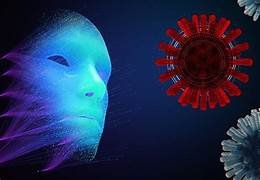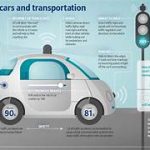The Potential of AI in Predicting and Preventing Pandemics
Pandemics have long posed a significant threat to human health and global stability, often spreading rapidly across borders and overwhelming healthcare systems. The COVID-19 pandemic was a stark reminder of the devastating impacts that infectious diseases can have on lives and economies. However, as technology advances, artificial intelligence (AI) has emerged as a powerful tool in combating these threats. From early detection to strategic response planning, AI has the potential to revolutionize how we predict and prevent pandemics.
AI in Early Detection of Outbreaks
One of the most crucial aspects of controlling pandemics is identifying outbreaks early. AI algorithms, powered by machine learning, can sift through vast amounts of data from diverse sources, including news articles, social media, scientific reports, and even satellite imagery. By analyzing patterns and anomalies, AI systems can detect unusual disease activity and flag potential outbreaks before they become widespread.
For instance, BlueDot, an AI-based platform, identified the outbreak of COVID-19 in Wuhan, China, days before it was officially reported. It achieved this by analyzing data from global airline ticketing systems, news reports, and official public health notices. Such systems highlight how AI can provide valuable lead time for public health officials to investigate and respond.
Genomic Analysis and Pathogen Identification
The genomic sequencing of pathogens is another area where AI shines. Identifying and understanding the genetic makeup of viruses and bacteria is crucial for developing vaccines, treatments, and diagnostic tools. AI can accelerate this process by analyzing genetic data more quickly and accurately than traditional methods.
For example, during the COVID-19 pandemic, AI algorithms were used to identify mutations in the virus’s genetic code, enabling researchers to track its spread and evolution. Additionally, AI can predict how pathogens might mutate in the future, helping scientists stay ahead in developing effective interventions.
Epidemiological Modeling and Predictive Analytics
AI-powered predictive models can simulate the spread of infectious diseases under various scenarios, helping policymakers and public health officials make informed decisions. These models consider multiple factors, such as population density, mobility patterns, climate conditions, and healthcare infrastructure, to provide a comprehensive picture of how a disease might progress.
During the COVID-19 pandemic, predictive models were instrumental in estimating case numbers, hospitalizations, and fatalities, which informed decisions about lockdowns, resource allocation, and vaccination campaigns. The ability of AI to process large datasets quickly and accurately makes it an indispensable tool for epidemiological modeling.
Enhancing Contact Tracing Efforts
Contact tracing is a critical strategy for controlling infectious diseases, but traditional methods can be labor-intensive and time-consuming. AI-powered tools, such as smartphone applications and wearable devices, have revolutionized contact tracing by automating the process and increasing its efficiency.
For example, during the COVID-19 pandemic, countries like South Korea used AI-based contact tracing systems to track potential exposures and notify individuals promptly. These systems relied on data from mobile phones, credit card transactions, and CCTV footage to identify contacts, enabling faster containment of the virus.
Optimizing Vaccine and Drug Development
The development of vaccines and treatments is often a lengthy and resource-intensive process. AI can significantly accelerate this timeline by identifying potential drug candidates and vaccine targets more efficiently. Machine learning algorithms can analyze vast databases of chemical compounds and biological data to predict which candidates are most likely to succeed in clinical trials.
For instance, AI played a pivotal role in the rapid development of COVID-19 vaccines, with companies like Moderna using AI to design the genetic sequence of their mRNA vaccine. This technological leap not only shortened the development timeline but also set a precedent for future vaccine development efforts.
Improving Healthcare Infrastructure and Resource Allocation
AI can optimize healthcare systems during pandemics by predicting resource needs and managing supply chains. For example, machine learning models can estimate the demand for hospital beds, ventilators, and personal protective equipment (PPE) based on infection trends. This allows governments and healthcare providers to allocate resources more effectively, reducing shortages and ensuring timely care.
Additionally, AI can support telemedicine platforms, enabling remote diagnosis and treatment during pandemics. By reducing the burden on healthcare facilities, telemedicine can help prevent system overload and limit disease transmission.
Addressing Challenges and Ethical Considerations
While the potential of AI in pandemic prediction and prevention is immense, it is not without challenges. Data quality and availability are significant concerns, as AI systems rely on accurate, comprehensive, and up-to-date information to make reliable predictions. Ensuring global data-sharing and collaboration is essential to overcome this hurdle.
Privacy and ethical concerns are also paramount. The use of personal data in AI-powered contact tracing and surveillance systems raises questions about individual rights and data security. It is crucial to implement robust privacy protections and transparent governance frameworks to build public trust and ensure responsible use of AI.
Moreover, the digital divide presents a barrier to the widespread adoption of AI technologies. Low- and middle-income countries may lack the infrastructure and resources needed to leverage AI effectively, exacerbating global health inequities. Bridging this gap through international cooperation and investment is vital for a coordinated global response to pandemics.
The Future of AI in Pandemic Preparedness
The integration of AI into pandemic preparedness and response is still in its early stages, but its potential is undeniable. As technology continues to advance, AI could become a cornerstone of global health security. Innovations such as real-time disease monitoring, personalized medicine, and AI-driven global health networks promise to reshape how we address pandemics in the future.
Governments, healthcare organizations, and technology companies must collaborate to harness the power of AI while addressing its challenges. Investments in research, infrastructure, and capacity-building are essential to ensure that AI technologies are accessible, effective, and ethical.
Conclusion
The potential of AI in predicting and preventing pandemics represents a paradigm shift in global health. From early detection and genomic analysis to resource optimization and vaccine development, AI offers a range of tools that can strengthen our ability to combat infectious diseases. However, realizing this potential requires addressing challenges such as data quality, privacy concerns, and global inequities.
By embracing AI and fostering international collaboration, humanity can move closer to a future where pandemics are not only more predictable but also more preventable. With the lessons learned from past outbreaks and the ongoing advancements in AI technology, the world has a unique opportunity to build a safer and healthier future for all.


